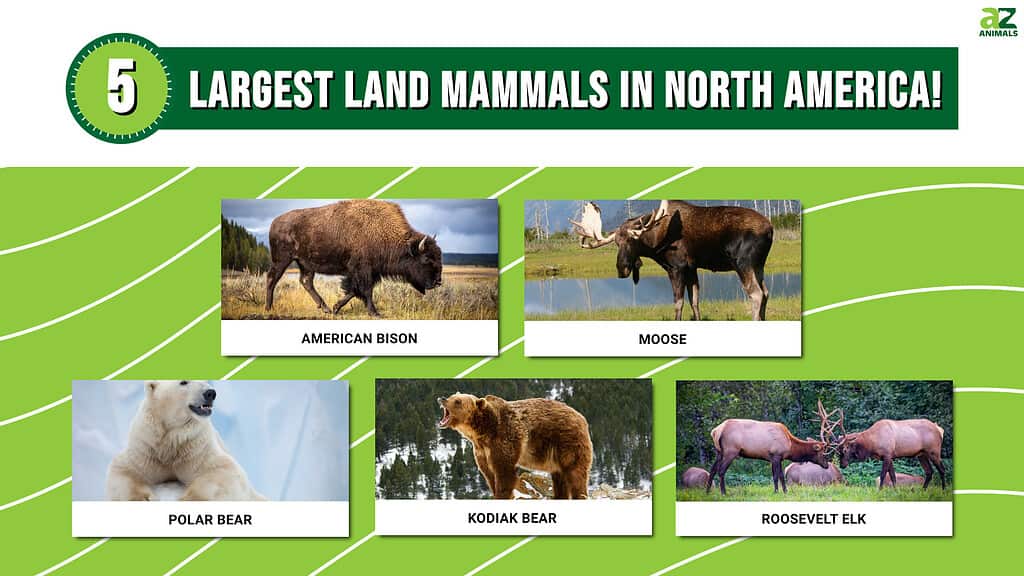
In North America, bigger is usually better. Both Canada and the United States are amongst the 10 largest countries in the world by area! In these big countries, there are many very big animals. From bison grazing in golden plains to polar bears traversing barren ice fields, incredibly large animals are found throughout North America. In this article, we will meet 5 of the largest land mammals in North America based on weight.
#5: Roosevelt Elk – 700-1,200 pounds
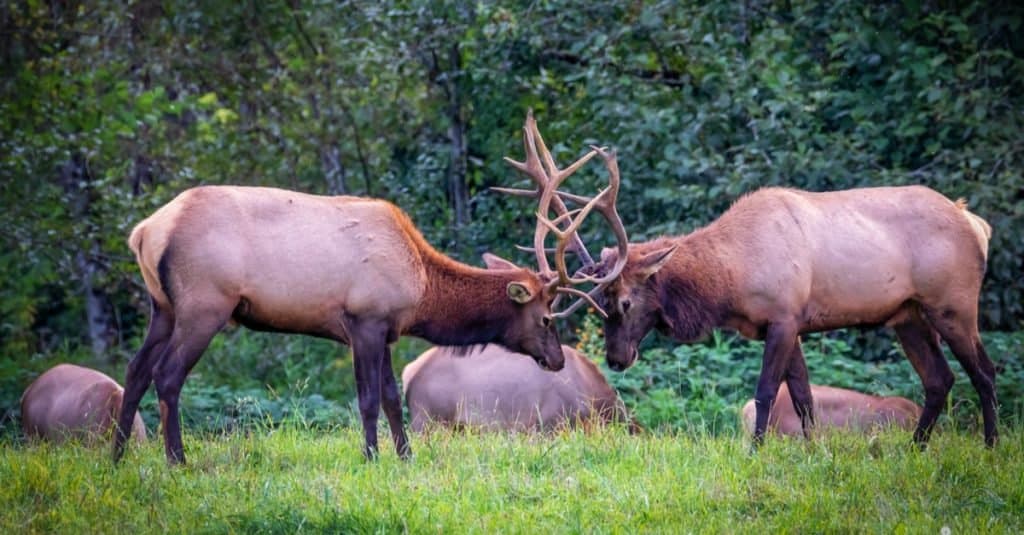
The Roosevelt elk are named for President Theodore Roosevelt and are the largest variety of elk in North America.
©Mark A Lee/Shutterstock.com
The Roosevelt elk is the fifth largest land mammal weighing on average between 700 and 1,200 pounds! This makes the Roosevelt elk the largest extant species of elk in North America! These majestic animals live in the temperate rainforests of the Pacific Northwest including the Hoh Rainforest in Washington state. Females and calves typically live in groups of 20 individuals whereas males live solitarily or in a small group with other males. Roosevelt elk were named for President Theodore Roosevelt when he designated Mount Olympus National Monument in 1909 in an effort to conserve the habitat of this beautiful species. Roosevelt elk are classified as least concern by the IUCN red list.
#4: Kodiak Bear – 660-1,320 pounds
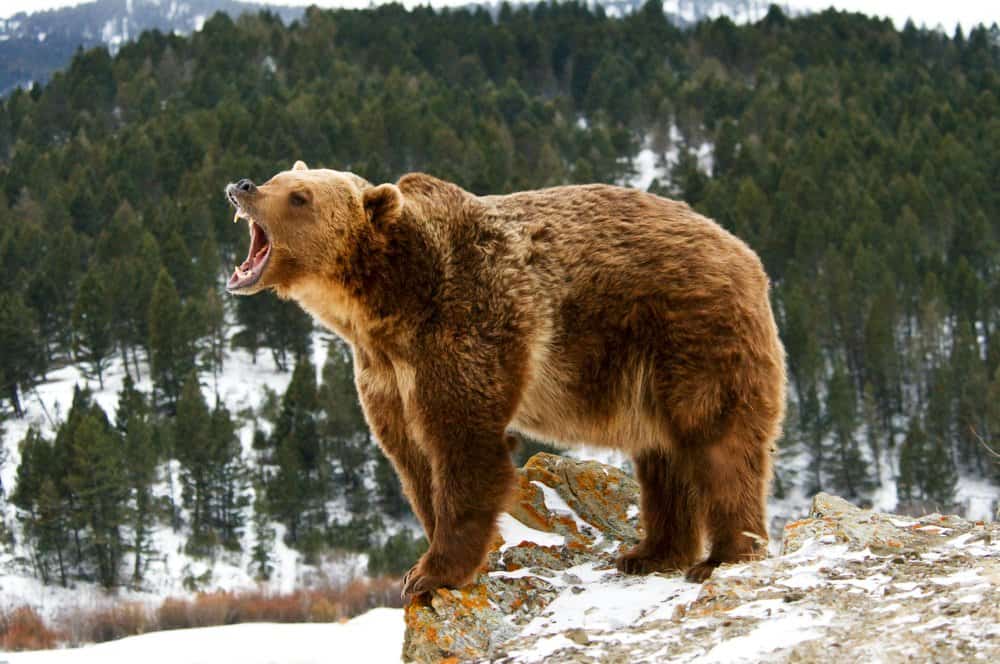
Kodiak bears are the largest subspecies of brown bear
©Scott E Read/Shutterstock.com
The Kodiak bear is the fourth largest North American land mammal weighing between 660 and 1,320 pounds! That’s the same size as five refrigerators! Kodiak bears are a subspecies of brown bear that inhabit the islands of the Kodiak Archipelago in Alaska. This is the largest subspecies of brown bear and is the second largest of any bear species after polar bears.
There is a long history of hunting the Kodiak brown bear and regulations are now in place from the Alaska Board of Game. Despite the 4,500 applicants each year, there are only 496 permits available to hunt these bears during a particular season. All non-residents of Alaska that receive a permit (one-third of permits granted) must attend an orientation and have a guide accompanying them on their hunt. All legal kills go through an inspection by a regulatory agency before pelts and meat can be taken from the islands. The conservation status of the Kodiak bear is least concern.
#3: Polar Bear – 770-1,540 pounds
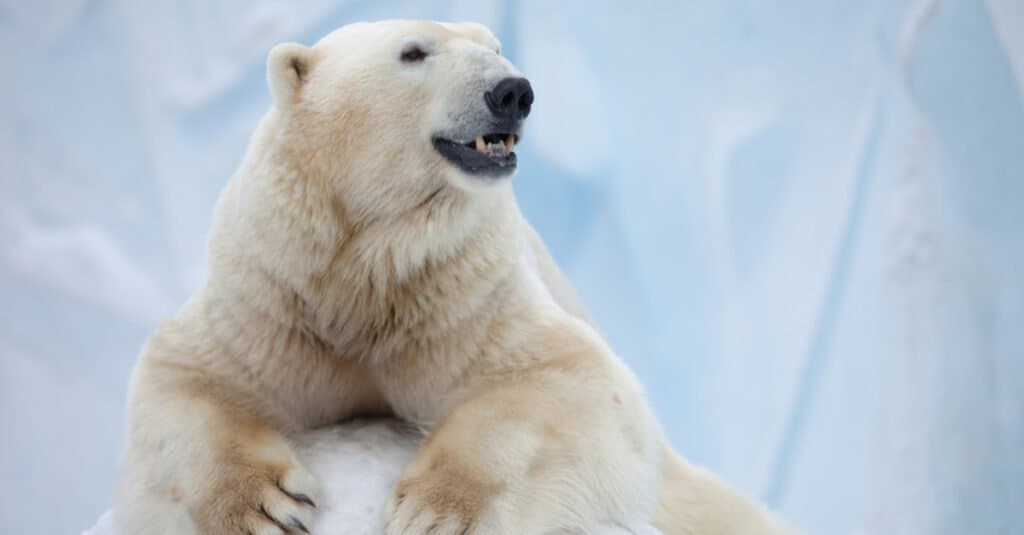
The largest polar bear ever recorded was seen in Alaska and weighed 2,209 pounds
©Zhiltsov Alexandr/Shutterstock.com
A male polar bear can weigh between 770 and 1,540 pounds! Polar bears are the largest living species of bear in the world! Polar bears spend a lot of time on land but are technically maritime mammals due to their reliance on the ocean. The largest polar bear ever recorded weighed a massive 2,209 pounds! This humongous polar bear was hunted in Alaska. There are 13 subpopulations of polar bears living in North America ranging from Alaska and Canada’s Northwest Territories adjacent to the Beaufort Sea to Hudson Bay.
Polar bears are classified as a vulnerable species and are at risk of becoming endangered unless preventative intervention occurs. This is due to the effects climate change has had on the polar ecosystem. Large-scale ice melting has caused the polar bear’s habitat to begin disappearing and requires polar bears to swim increasingly difficult distances. Although polar bears are incredible swimmers with a record distance of 400 miles, this puts them at risk of drowning.
#2: Moose – 838-1,543 pounds
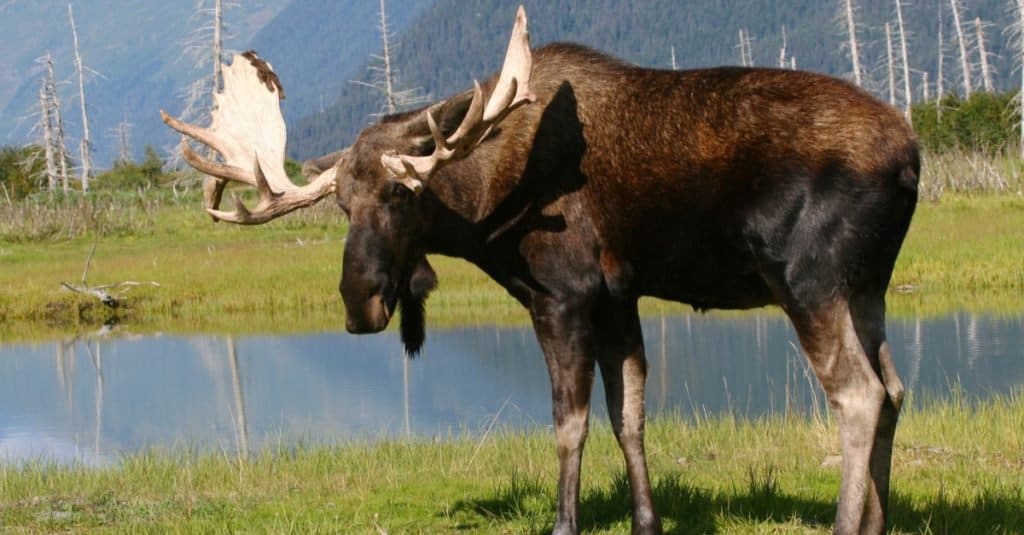
A male Alaskan moose holds the record for heaviest antlers at 79 pounds.
©Steve Bower/Shutterstock.com
The second largest land mammal in North America is the 838-1,543 pound moose. There are four North American subspecies of moose including the western, eastern, Yellowstone, and Alaskan moose. The largest confirmed moose was hunted at the Yukon River in 1897 weighing a whopping 1,808 pounds! There was a report of a 2,299 pound moose in 2004, but this was not verified. An Alaskan moose holds the record for heaviest antlers at 79 pounds!
Moose injure more people in America than any other animal and worldwide are second only to hippopotamuses. Moose are also responsible for fatal vehicle collisions. A moose’s center of mass is taller than the hood of most vehicles. In a collision, the moose will crush the windshield, front roof beams, and the driver and passenger inside the vehicle. Vehicle-moose collisions, therefore, have a high mortality rate for both the humans and the moose involved. The IUCN red list classifies this animal as least concern.
#1: American Bison – 701-2,599 pounds
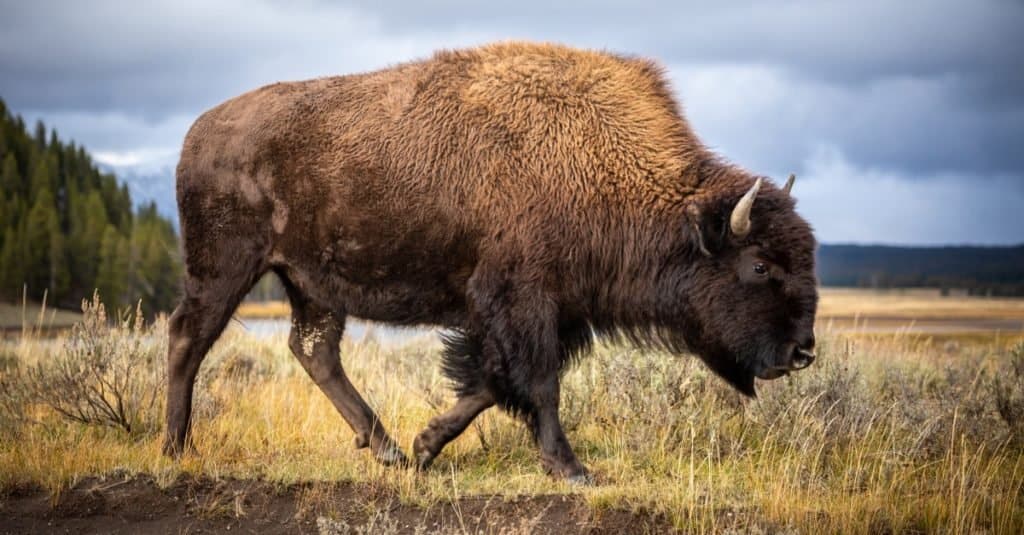
American bison in Yellowstone National Park, Wyoming, USA.
©jack-sooksan/Shutterstock.com
The largest land mammal in North America is the American bison! The American bison is also the national mammal of the United States. This beast can weigh 701 to 2,599 pounds! The largest wild American bison ever recorded was a bull weighing 2,800 pounds. Bison are also bred in captivity and raised for meat. The largest bison in captivity weighed an unbelievable 3,801 pounds! Despite their size, a bison can jump six feet vertically and can run 40 miles per hour. Adult bison have few predators, but when hunted they primarily fall prey to wolves. Bison are ruminants, meaning they have a special stomach that ferments plants before digestion. They can therefore eat large amounts of grasses and woody plants that are normally not easy to digest.
Bison have a long history with humans. They were a crucial food source for Native Americans inhabiting the plains. They also provided hides and bones to use for clothing, tools, and shelter. Bison held cultural and spiritual significance as well, particularly amongst the Sioux and Mandan people. In these cultures, bison were sacred and amongst Sioux people, the White Buffalo Calf Woman was the primary spiritual prophet. The mass killing of bison during the American Indian Wars was an effort to eliminate the primary resource of the Plains people. Government orders to eradicate bison lead to their near extinction in 1890.
Today, the American bison is a near-threatened species. Repopulation efforts have been successful in raising the number of bison from its population of 1,091 individuals in 1890. Many of the bison that exist today, however, are actually hybrids with domestic cattle. Only two populations, one in Yellowstone National Park and one in Elk Island National Park, have genetically pure American bison.
Summary Of The 5 Largest Land Mammals In North America
| Rank | Land Mammal | Weight |
|---|---|---|
| 1 | American Bison | 701-2,599 pounds |
| 2 | Moose | 838-1,543 pounds |
| 3 | Polar Bear | 770-1,540 pounds |
| 4 | Kodiak Bear | 660-1,320 pounds |
| 5 | Roosevelt Elk | 700-1,200 pounds |
The photo featured at the top of this post is © Photo Spirit/Shutterstock.com
FAQs (Frequently Asked Questions)
What large mammals have gone extinct in North America?
Some extinct North American mammals include:
- Wooly Mammoths
- Mastodons
- Camelops
- Dire Wolves
- Short-faced Bears
- Giant Beavers
Thank you for reading! Have some feedback for us? Contact the AZ Animals editorial team.







